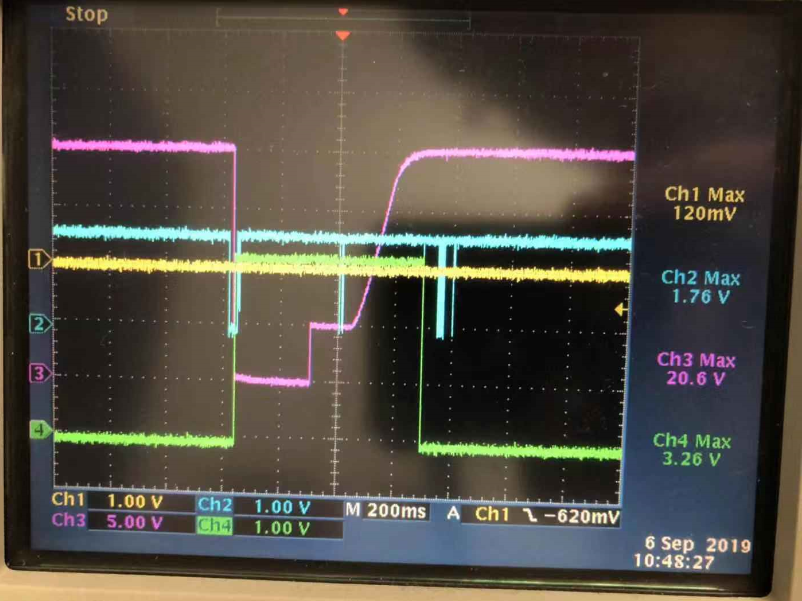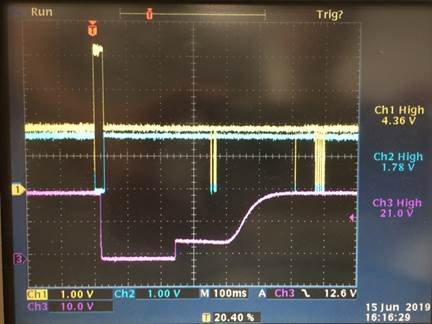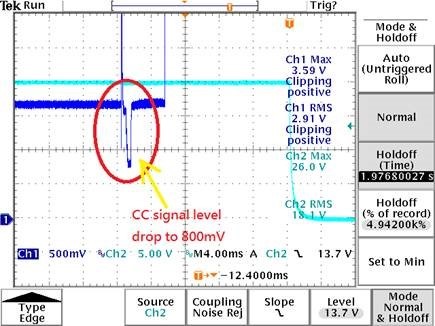Other Parts Discussed in Thread: , STRIKE
Hi,
With TPD6S300 implemented on a PD type-c port on a laptop, customers tried to perform ESD air 8kV test and see the result in the waveform as below. You can see the type-c connection is reset at this moment. Here's some questions ,
- Should we expect CCx is disconnected from C_CCx within TPD6S300 when such air ESD is performed? If so, the reset of the type-c connection should be expected result, right?
- After peforming such test several times, customer found the connection is not recovered automatically. It needs a unplug/re-plug to recover the normal type-c/PD behavior. How can we explain/debug this?
Thanks!
Antony
CH1_CC1/CH2_CC2/CH3_VBUS




